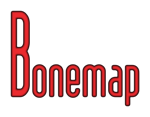terrestrial nerve
dance installation
Terrestrial Nerve was a dark island. Its story charted a magical geography of difficult terrains, intriguing expressions of mnemonic pattern and graphic structure that linked perceptions of cultural tenure, identity and place. Grounded in intermedia processes that provided a curious logic, the creative team constructed and conceptualised the works visual and linguistic formation between the cartography of the map and the tacit embodiment of the territory. The work was resolutely philosophical, a liminal terrain between the creation of reality and the magic of representation.
Maps impress boundaries on the mind, the boundary between land and sea, by giving that boundary a linguistic shape. (Klein 2011)
Terrestrial Nerve was an immersive installation suited to the theatre or gallery setting. It created a dynamic and sublime intermedial live or static installation influenced by encounters with frontier zones, border crossings and psychological inhabitation. Embodied cognition mediated the approach to the landscape of the body. The psychological terrain was at the intersense of perception and required careful interpretation of reality, interposed between reality and the self. Its representation exemplified by the quasi-geological formation of mass aided by mirrors.
The scenography charged the simulation of atmospheric events that imaginatively represented an enchanted world. Inanimate material suddenly became a compelling character within a non-sequitur surrealist narrative. Dancers responded to the materialisation of a place, where fantastical and ephemeral forces sculpted secret identities by changing the parameters of the physical and imagined. At the heart of the work, anatomical, spiritual, environmental and topographical themes imbued a liminal terrain, evocative of cosmological events induced by the fluid complexity of wind and water.
Choreographic augmented technologies and customised handheld devices provided sources for real-time data processing that mingled with visually rich media design, temporary installation, enigmatic sound, and personal dance performance to provide a tacit intermedial environment for audiences to experience and traverse.
Experimenting with new modalities that elucidated digital architectonics, the works objective of transformation included the physical and the psychological as the critical location of an incident. The practice of kinesthetic and choreographic art privileged the empathetic body of both the performer and audience, providing a phenomenological platform for a body that not only moves in space but also a body that moves the space around and through itself.
One describes a tale best by telling the tale. You see? The way one describes a story, to oneself or the world, is by telling the story. It is a balancing act and it is a dream. The more accurate the map, the more it resembles the territory. The most accurate map possible would be the territory, and thus would be perfectly accurate and perfectly useless. The tale is the map that is the territory. (Gaiman 2006 after Borges)
The project used morphology and topographical metaphors to subvert the impression of boundaries and the perception of stability and sovereignty presumed by maps and representation, such as the geopolitical effect of cartography on the imagination or the gender mapping of the human body. A panoptic sensibility created between the cartography of the map and the embodiment of the territory, between the magic of virtual representation and the creation of an embodied present.
With the intention to create a unique architectural and spatial logic with data flows that divulged difficult graphical, social, personal and psychological terrains, the personal engagement of the work fell outside those of natural convention. Allusion to the inhabitation of frontier zones and border crossings as inherently liminal territories exposed to risky transgressive acts provided psycho-geographic spaces influenced by the encounters of contested cultural and biological landscapes.
Reference List
Borges, J. L. & Hurley, A. 1998. Collected fictions, New York, Allen Lane, The Penguin Press.
Gaiman, N 2006. Fragile Things: Short Fictions and Wonders, William Morrow isbn: 0060515228
Klein, B 2011, 'Mapping the waters: sea charts, navigation, and Camões's Os Lusíadas', Renaissance Studies, vol. 25, no. 2, pp. 228-47.
Duration: 35 minutes
This production contained partial nudity.
Nerve Engine and Terrestrial Nerve were assisted by the Centre of Contemporary Arts Cairns, the Australian Government through the Australia Council, its arts funding and advisory body, the Queensland Government through Arts Queensland, Ausdance Qld, James Cook University SoCA, and QUT Creative Industries Precinct.
artists
Russell Milledge and Rebecca Youdell artistic co-directors in collaboration with dancer Catherine Hassall, sound artist Steven Campbell, and software programmer Jason Holdsworth
technical assistance
Sarah Laute, Tai Inoue
sponsors
Centre of Contmeporary Arts Cairns, Ausdance Queensland 2012 Creative Develpment Fund, School of Creative Arts James Cook University, Brisbane Festrival 2013 and QUT Creative Industries Precincts.












